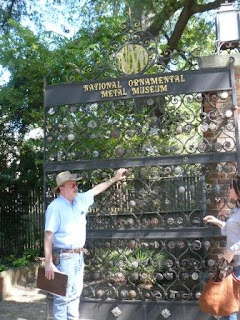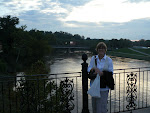 to Mexico with her husband, who is battling cancer. I gathered a few paperbacks (easier for travel) from my shelves and took them to our regular meeting at Starbucks. That was about a month ago. So, last week when we got together, she told me all about their trip, and showed me the beautiful memories she had captured in her watercolor journal. As she was returning some of the paperbacks, she commented briefly on one of them, The Last of the Southern Girls by Willie Morris.
to Mexico with her husband, who is battling cancer. I gathered a few paperbacks (easier for travel) from my shelves and took them to our regular meeting at Starbucks. That was about a month ago. So, last week when we got together, she told me all about their trip, and showed me the beautiful memories she had captured in her watercolor journal. As she was returning some of the paperbacks, she commented briefly on one of them, The Last of the Southern Girls by Willie Morris. “I didn’t finish this one—it was just too… sad.”
“Really? I’m sorry, I didn’t mean to send anything with you that might bring you down.”
My mind struggled to recall the plot of this book that I had read several years ago. I had remembered it as a romantic tale of an Ole Miss sorority girl taking on Washington society in the sixties and seventies… the same years that this Ole Miss sorority girl was still stuck in Mississippi. I was on a spiritual and cultural journey of a completely different kind. Some of the difficult parts of that journey are being recorded in the pages of my memoir-in-progress. And yeah, there’s lots of sadness there, but it’s a memoir, not a romantic comedy.
So yesterday when some of the folks in my writers critique group gave me their gentle but wise feedback on the pages I had just penned—the pages about some difficult and dark things that happened during those same years that Morris chronicled in The Last of the Southern Girls—I listened to their suggestions because I respect their journeys and their own personal endeavors to capture their memories, and our collective Southern history, in the short stories and novels they are drafting.
 Morris told an interviewer in 1979 that “if there is anything that makes southerners distinctive from the main body of Americans, it is a certain burden of memory and a burden of history.... I think sensitive southerners have this in their bones, this profound awareness of the past.”
Morris told an interviewer in 1979 that “if there is anything that makes southerners distinctive from the main body of Americans, it is a certain burden of memory and a burden of history.... I think sensitive southerners have this in their bones, this profound awareness of the past.”
Doug, Patti and Herman (and Tom, who couldn’t join us yesterday because, well, because his loyalties were torn—he was at the Ole Miss-Florida game watching the Rebels whip up on the Gators down in the swamp) are all “sensitive southerners” who definitely share this burden of memory, and this profound awareness of the past. All four of us are working on memoirs, stories and novels involving those memories and histories, across Louisiana, Mississippi and Alabama.
“Really? I’m sorry, I didn’t mean to send anything with you that might bring you down.”
My mind struggled to recall the plot of this book that I had read several years ago. I had remembered it as a romantic tale of an Ole Miss sorority girl taking on Washington society in the sixties and seventies… the same years that this Ole Miss sorority girl was still stuck in Mississippi. I was on a spiritual and cultural journey of a completely different kind. Some of the difficult parts of that journey are being recorded in the pages of my memoir-in-progress. And yeah, there’s lots of sadness there, but it’s a memoir, not a romantic comedy.
So yesterday when some of the folks in my writers critique group gave me their gentle but wise feedback on the pages I had just penned—the pages about some difficult and dark things that happened during those same years that Morris chronicled in The Last of the Southern Girls—I listened to their suggestions because I respect their journeys and their own personal endeavors to capture their memories, and our collective Southern history, in the short stories and novels they are drafting.
 Morris told an interviewer in 1979 that “if there is anything that makes southerners distinctive from the main body of Americans, it is a certain burden of memory and a burden of history.... I think sensitive southerners have this in their bones, this profound awareness of the past.”
Morris told an interviewer in 1979 that “if there is anything that makes southerners distinctive from the main body of Americans, it is a certain burden of memory and a burden of history.... I think sensitive southerners have this in their bones, this profound awareness of the past.”Doug, Patti and Herman (and Tom, who couldn’t join us yesterday because, well, because his loyalties were torn—he was at the Ole Miss-Florida game watching the Rebels whip up on the Gators down in the swamp) are all “sensitive southerners” who definitely share this burden of memory, and this profound awareness of the past. All four of us are working on memoirs, stories and novels involving those memories and histories, across Louisiana, Mississippi and Alabama.
So, it was fitting that our group, the Yoknapatawpha Writers Group, met down on the banks of the Mississippi River Saturday, since the name “Yoknapatawpha” (the fictional county in many of Faulkner’s writings) means “water  flowing slowly through fertile ground” … which is what we’re trying to capture with the slow but important work of illustrating a culture with our writing. The work is slow, but hopefully, the ground is fertile. We usually meet monthly in Oxford, but with the Presidential Debate, we knew the traffic would be wicked, so Herman proposed that we meet out behind the Ornamental Metal Museum in Memphis, with its amazing view of the river. Herman is a member of the Museum, and a contributing sculpture/artist.
flowing slowly through fertile ground” … which is what we’re trying to capture with the slow but important work of illustrating a culture with our writing. The work is slow, but hopefully, the ground is fertile. We usually meet monthly in Oxford, but with the Presidential Debate, we knew the traffic would be wicked, so Herman proposed that we meet out behind the Ornamental Metal Museum in Memphis, with its amazing view of the river. Herman is a member of the Museum, and a contributing sculpture/artist.
 flowing slowly through fertile ground” … which is what we’re trying to capture with the slow but important work of illustrating a culture with our writing. The work is slow, but hopefully, the ground is fertile. We usually meet monthly in Oxford, but with the Presidential Debate, we knew the traffic would be wicked, so Herman proposed that we meet out behind the Ornamental Metal Museum in Memphis, with its amazing view of the river. Herman is a member of the Museum, and a contributing sculpture/artist.
flowing slowly through fertile ground” … which is what we’re trying to capture with the slow but important work of illustrating a culture with our writing. The work is slow, but hopefully, the ground is fertile. We usually meet monthly in Oxford, but with the Presidential Debate, we knew the traffic would be wicked, so Herman proposed that we meet out behind the Ornamental Metal Museum in Memphis, with its amazing view of the river. Herman is a member of the Museum, and a contributing sculpture/artist.  It was beautiful on the lawns behind the museum and workshop, where folks were setting up a tent, tables and chairs for a late afternoon wedding. I couldn’t resist taking a few pictures.
It was beautiful on the lawns behind the museum and workshop, where folks were setting up a tent, tables and chairs for a late afternoon wedding. I couldn’t resist taking a few pictures.This one, “The Whistling Pig,” is part of the current Art Cookers III exhibit, and is actually a working steam powered calliope, like the ones found on riverboats. I heard one for the first time back in May, when I was in New Orleans. 
I love the “Friendship Bridge”


I love the “Friendship Bridge”


And this crazy bird.
And this welcoming bench.
A nd even this flower on the bluff by the river, signaling the rare and glorious days of an Indian Summer here in Memphis.
nd even this flower on the bluff by the river, signaling the rare and glorious days of an Indian Summer here in Memphis.
And this welcoming bench.
A
 nd even this flower on the bluff by the river, signaling the rare and glorious days of an Indian Summer here in Memphis.
nd even this flower on the bluff by the river, signaling the rare and glorious days of an Indian Summer here in Memphis.We took a break for lunch at the nearby Arcade Restaurant, on South Main Street, where we sat in the “Elvis Presley” booth, the last booth in the back of the main room. 


Back on the grounds of the museum, we continued our work, amidst the buzz of the wedding set- up. It was also fascinating to watch the "boat stores" on the river, carrying groceries to the tug boats that pushed the barges up (or down) the river, so that they never needed to stop their journey, even to refuel or change crews.
up. It was also fascinating to watch the "boat stores" on the river, carrying groceries to the tug boats that pushed the barges up (or down) the river, so that they never needed to stop their journey, even to refuel or change crews.
 up. It was also fascinating to watch the "boat stores" on the river, carrying groceries to the tug boats that pushed the barges up (or down) the river, so that they never needed to stop their journey, even to refuel or change crews.
up. It was also fascinating to watch the "boat stores" on the river, carrying groceries to the tug boats that pushed the barges up (or down) the river, so that they never needed to stop their journey, even to refuel or change crews. Herman enjoyed sharing some of the history of the museum with us, like this memorial gate and the artists who contributed to it.
Herman enjoyed sharing some of the history of the museum with us, like this memorial gate and the artists who contributed to it.
Doug captured Herman, Patti and me posing in front of it.
Earlier, Herman had told me the story of this unusual metal sculpture of the top of a man's head, which a ppears to be drowning, sinking into the fountain beneath. The sculptor was dying, with Lou Gherig's Disease, but he designed the piece and even in his wheelchair, gave directions for its installation.
ppears to be drowning, sinking into the fountain beneath. The sculptor was dying, with Lou Gherig's Disease, but he designed the piece and even in his wheelchair, gave directions for its installation.
 ppears to be drowning, sinking into the fountain beneath. The sculptor was dying, with Lou Gherig's Disease, but he designed the piece and even in his wheelchair, gave directions for its installation.
ppears to be drowning, sinking into the fountain beneath. The sculptor was dying, with Lou Gherig's Disease, but he designed the piece and even in his wheelchair, gave directions for its installation.After we finished our afternoon critique session, we enjoyed a cool evening on the deck outside at Bosco’s Squared in midtown.
What an incredibly beautiful day. And today,as I reflected on some of the encouragement I had received from my fellow writers, I read again Willie Morris’s words in the preface of The Last of the Southern Girls. When Morris wrote this book, he was broke, his dog had died, and his relationship with a Washington, D.C. celebrity (upon whom the book is based) had ended. Friends and peers who read early drafts of the book said he had “undergone some sort of odd psychic breakdown,” and others said that even his words, “which had apparently never failed me, had certainly done so now.”
To Morris’ surprise, the book made more money than anything he’d ever written, and even got a substantial Hollywood option. But he never reread the book, saying he was “brushed with dark ambivalent wisps of memory and emotion….” and that “any book has the writer’s surreptitious scars on it in perpetuity.”
The writer’s surreptitious scars. I wonder if they will be visible to our readers, or if they are only seen by the ones on whom they have been inflicted? Oh, the burden of memory. Why do Southern writers endure it? To reclaim a part of our life, as Scott Morris said at the Yoknapatawpha Writing Workshop back in June.
The writer’s surreptitious scars. I wonder if they will be visible to our readers, or if they are only seen by the ones on whom they have been inflicted? Oh, the burden of memory. Why do Southern writers endure it? To reclaim a part of our life, as Scott Morris said at the Yoknapatawpha Writing Workshop back in June.
And also, as Elizabeth Berg said, “You have to be in love with writing itself, with the solitary and satisfying act of sitting down and watching something you hold in your head and your heart quietly transform itself into words on a page." The love affair continues. And I can see the fire burning in the work that Doug, Patti and Herman are doing. Oh, and congratulations to Michelle Bright, a fellow student at the workshop in Oxford this past June—Michelle’s a journalism student at Ole Miss, and won herself a ticket to the debate with her essay on why Oxford should be the venue for the Presidential Debate. Can’t wait to hear her take on the doings there this past Friday night! Kudos, Michelle! (That's Michelle, joining me and others for coffee on the balcony at Square Books during the workshop.)
satisfying act of sitting down and watching something you hold in your head and your heart quietly transform itself into words on a page." The love affair continues. And I can see the fire burning in the work that Doug, Patti and Herman are doing. Oh, and congratulations to Michelle Bright, a fellow student at the workshop in Oxford this past June—Michelle’s a journalism student at Ole Miss, and won herself a ticket to the debate with her essay on why Oxford should be the venue for the Presidential Debate. Can’t wait to hear her take on the doings there this past Friday night! Kudos, Michelle! (That's Michelle, joining me and others for coffee on the balcony at Square Books during the workshop.)
 satisfying act of sitting down and watching something you hold in your head and your heart quietly transform itself into words on a page." The love affair continues. And I can see the fire burning in the work that Doug, Patti and Herman are doing. Oh, and congratulations to Michelle Bright, a fellow student at the workshop in Oxford this past June—Michelle’s a journalism student at Ole Miss, and won herself a ticket to the debate with her essay on why Oxford should be the venue for the Presidential Debate. Can’t wait to hear her take on the doings there this past Friday night! Kudos, Michelle! (That's Michelle, joining me and others for coffee on the balcony at Square Books during the workshop.)
satisfying act of sitting down and watching something you hold in your head and your heart quietly transform itself into words on a page." The love affair continues. And I can see the fire burning in the work that Doug, Patti and Herman are doing. Oh, and congratulations to Michelle Bright, a fellow student at the workshop in Oxford this past June—Michelle’s a journalism student at Ole Miss, and won herself a ticket to the debate with her essay on why Oxford should be the venue for the Presidential Debate. Can’t wait to hear her take on the doings there this past Friday night! Kudos, Michelle! (That's Michelle, joining me and others for coffee on the balcony at Square Books during the workshop.)




































































































